So, you want to know how to make shortbread cookies? I have all the tips you need to get the perfect traditional all butter shortbread (with a cheeky optional passionfruit icing). Shaped into the classic petticoat tails shape, these shortbread cookies have all that buttery flavour and tender, somehow-soft-yet-crumbly texture you want. They are straight up the best. Yep, I said it.
Shortbread is a classic and while it’s a classic for serving at Christmas, it’s so quick, easy and delicious, you’ll want it all year round.
I’ve used this recipe, slightly adjusted, in my melting moments too and they really do have the most amazing melt-in-the-mouth texture. The main difference being that these all butter shortbread use caster sugar (superfine sugar) as opposed to icing sugar (powdered sugar) in melting moments.
This recipe was first published here on 17th of February, 2018. It has been updated with new photos and a more traditional styling.

What is shortbread?
Originating in Scotland, shortbread is a crumbly cookie traditionally made with just butter, sugar and flour. There is no leavening (or raising agent) in shortbread cookies. While it was made for centuries before, the recipe we now know as shortbread and it’s classic shape called petticoat tails has been largely attributed to Mary, Queen of Scots in the 16th century.
There are 3 main shapes for shortbread; regular round cut cookies, fingers and petticoat tails. The latter is the name given to shortbread in a wedge shape with a scalloped edge – that scalloped edge resembling the lace on petticoats. This really simple method of shaping is not just pretty, it’s very simple and results in no wastage.
Sometimes, other types of flour are added to shortbread to adjust the texture slightly. Rice flour is very common and gives a bit of a crunch. Cornflour (also know as cornstarch) is another option, and my favourite, resulting in a really tender cookie.
Never Miss a Recipe!
Get the latest recipes straight to your inbox!
Where does the name shortbread come from?
The “short” in shortbread, refers to it’s crumbly texture, caused by the high ratio of fat. In turn, the word “shortening” is a name for types of fat. Classic shortbread is made with all butter.
Ingredients you’ll need
With just 5 ingredients in the main shortbread recipe, and only a further two if you add the passionfruit icing, these truly are so quick and easy to make.
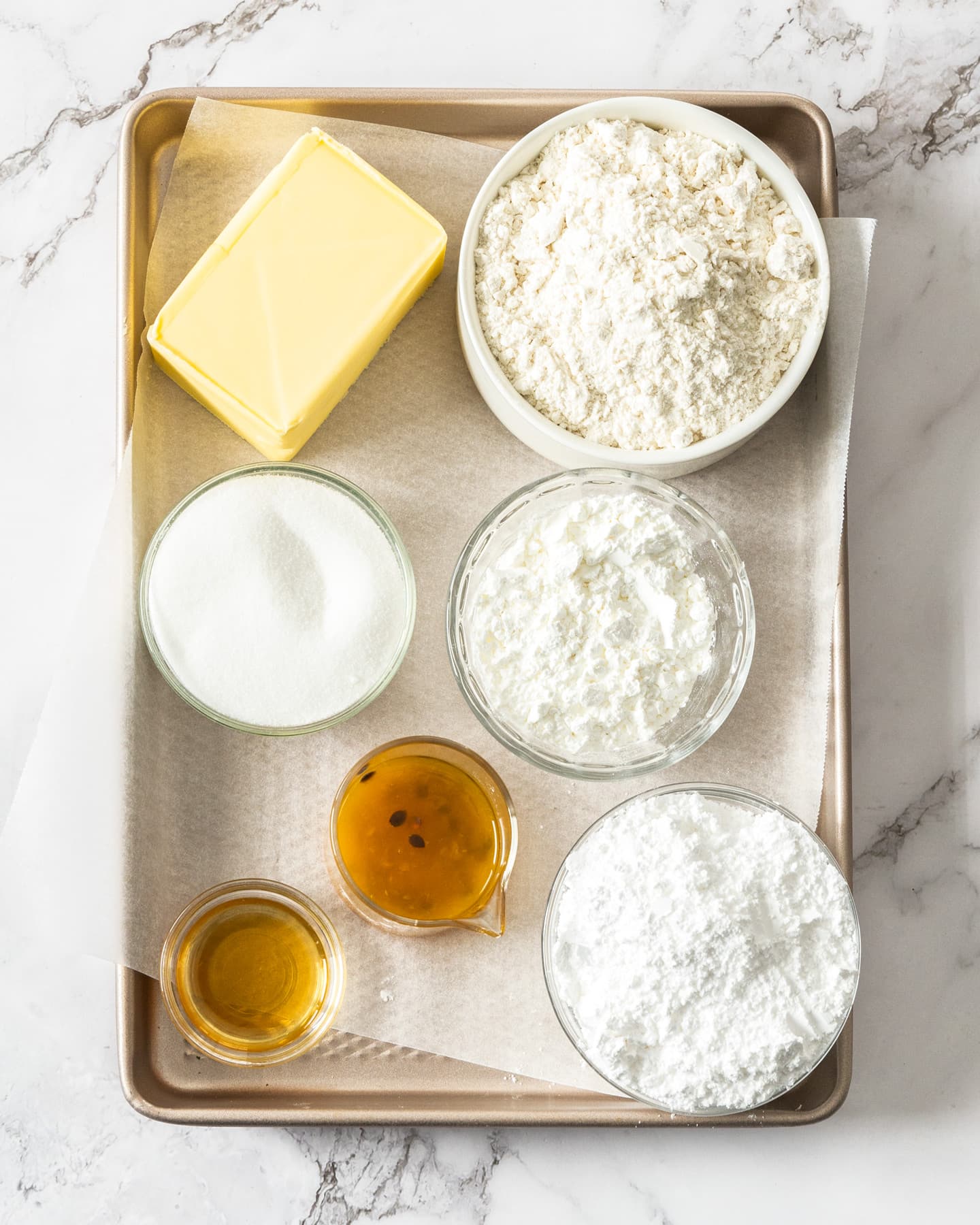
Jump to the recipe for full ingredients and instructions.
- Butter: Unsalted butter is best for shortbread since they aren’t a super sweet cookie to begin with. Salted butter is likely to give too much of a salty flavour.
- Caster sugar: Also known as superfine sugar, this is beaten together with the butter until nice and creamy.
- Flour: The first of the two flours you’ll need is plain flour (all purpose flour).
- Cornflour: Known in many places as cornstarch, cornflour is a very fine, soft flour, often used for thickening things or for adding softness in baking. Here, it gives a gorgeous melty texture.
- Vanilla extract: Make sure to use extract and not essence, the latter being a synthetic flavouring.
- The icing: If you want to add the gorgeous, tropical icing, you’ll also need some icing sugar (aka powdered sugar or confectioners sugar) and some passionfruit puree.
How to make shortbread
This is quite an intriguing cookie dough because when you mix it all up together, it’s quite a sticky dough. Not the sort of dough you could use to roll and cut out shapes, depending on your patience level. I have none though, so I’ll suggest you don’t try that. That aside, it holds it’s shape beautifully in the oven. On the off chance you’ve let your butter get too soft prior to making the dough, just chill the dough for 10 minutes before baking.
Start by making the dough
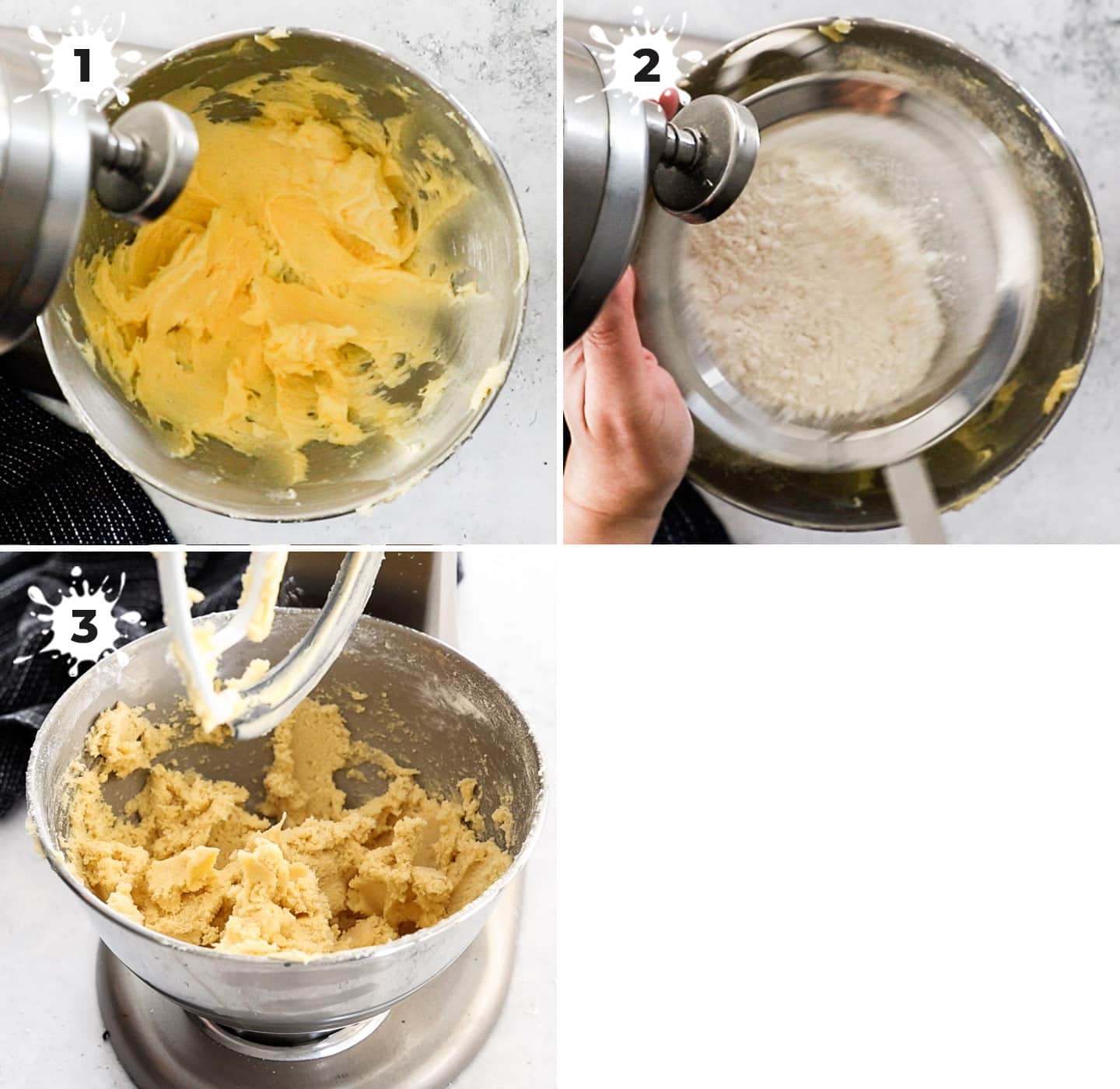
Jump to the recipe for full ingredients and instructions.
- Start by creaming together butter and sugar until pale and fluffy. Make sure your butter is softened to begin with but not so soft that it looks greasy. I use a stand mixer but you can do this with a hand mixer too.
- Now sift in the flour and cornflour and gently beat until just combined.
- Finally add the vanilla and beat until just combined again. Now you have a sticky and soft, yet malleable shortbread dough.
Roll the dough
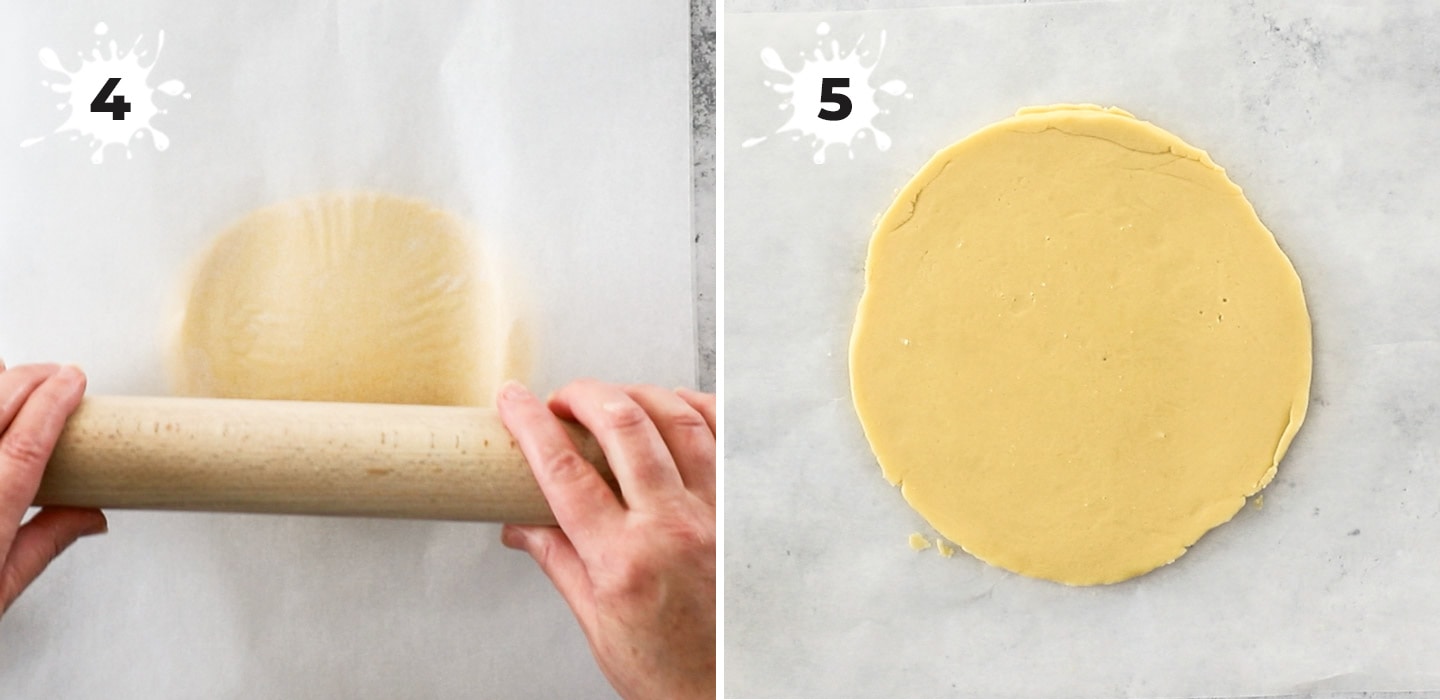
- Divide the dough into 2 portions and for each one roll it out between two sheets of baking paper to an 8 inch circle.
Shape the petticoat tails
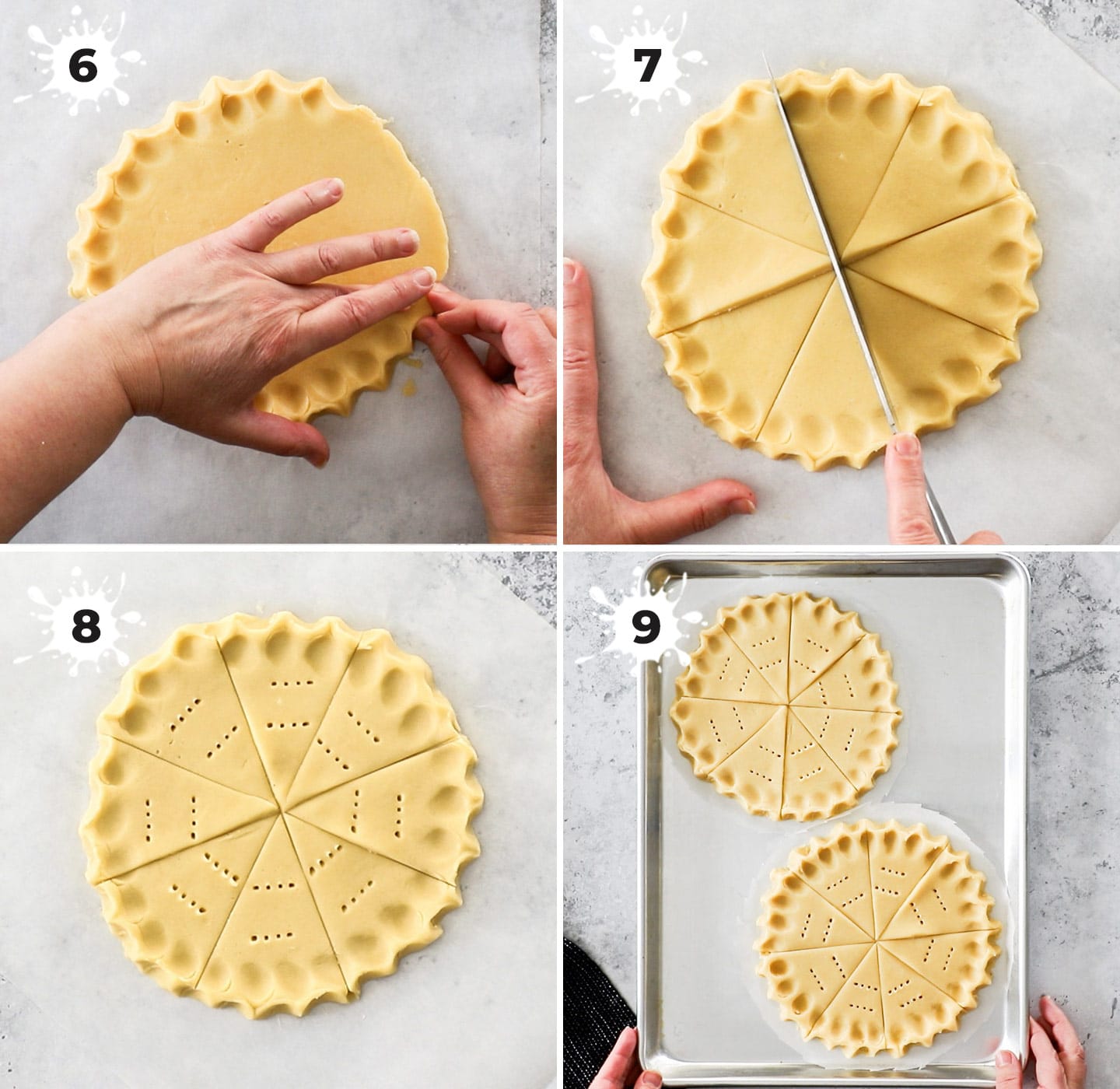
- Use your fingers to crimp the edge all the way around then cut the circle into 8 wedges.
- Use a fork to make a couple of pricks into each wedge, then transfer your shortbread dough to a baking sheet.
- Now bake!
You want to bake your all butter shortbread just until they’re pale golden all over but no so much that they get dark around the edge. They should remain blonde. This will give you the perfect fully cooked and crumbly but somehow meltingly soft inside.
The non-traditional icing
The icing is sweet and full of that lovely passionfruit flavour. It’s not a traditional topping in a Scottish shortbread recipe. In fact, traditional shortbread just has a sprinkling of sugar before baking and that’s it but oh my, this passionfruit icing is amazing and truly the icing on the cookie.
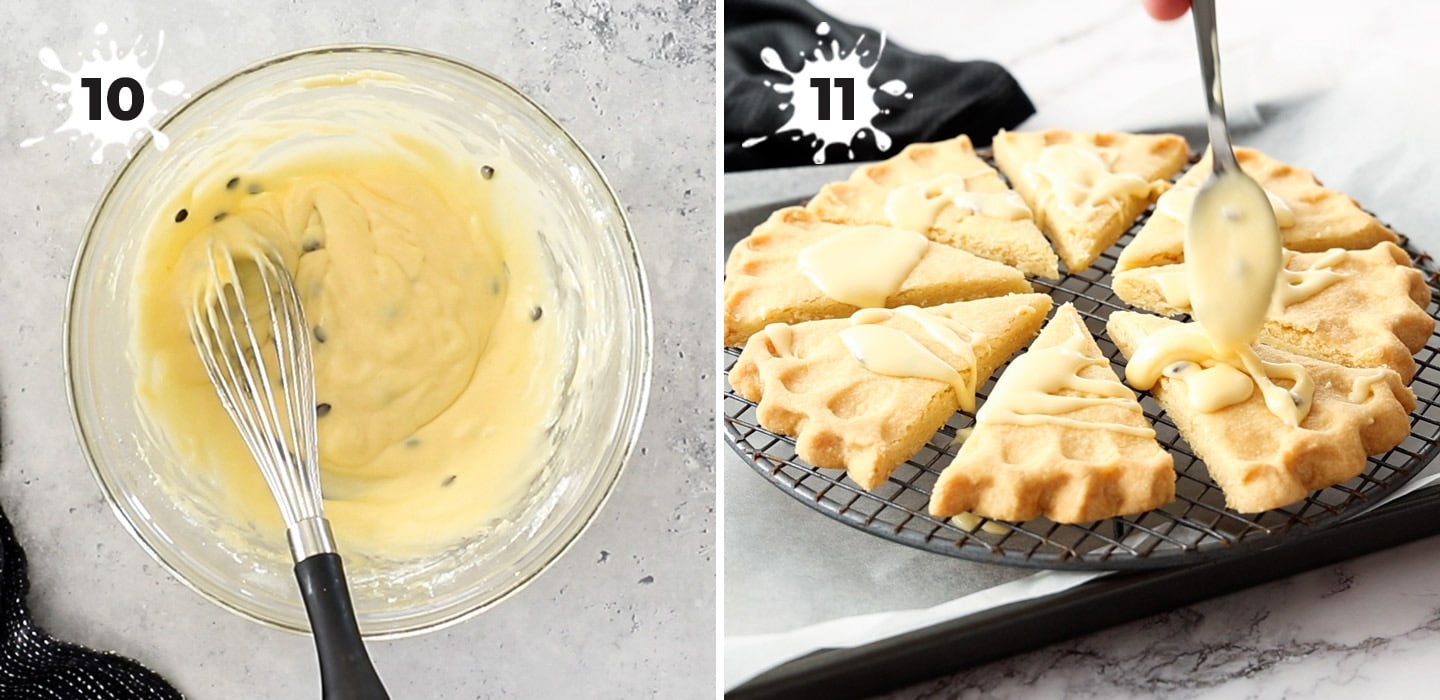
- Simply mix together icing sugar, passionfruit pulp and melted butter in a bowl.
- Then drizzle it over the top of your shortbread.
The consistency of the icing should be so that it pours off the spoon very slowly. It will settle into a smooth icing after 10-12 seconds. Too runny and it will just run straight off your cookies. That’s not a huge problem. You can just re-coat them a few extra times or add a little more icing sugar to thicken consistency slightly.
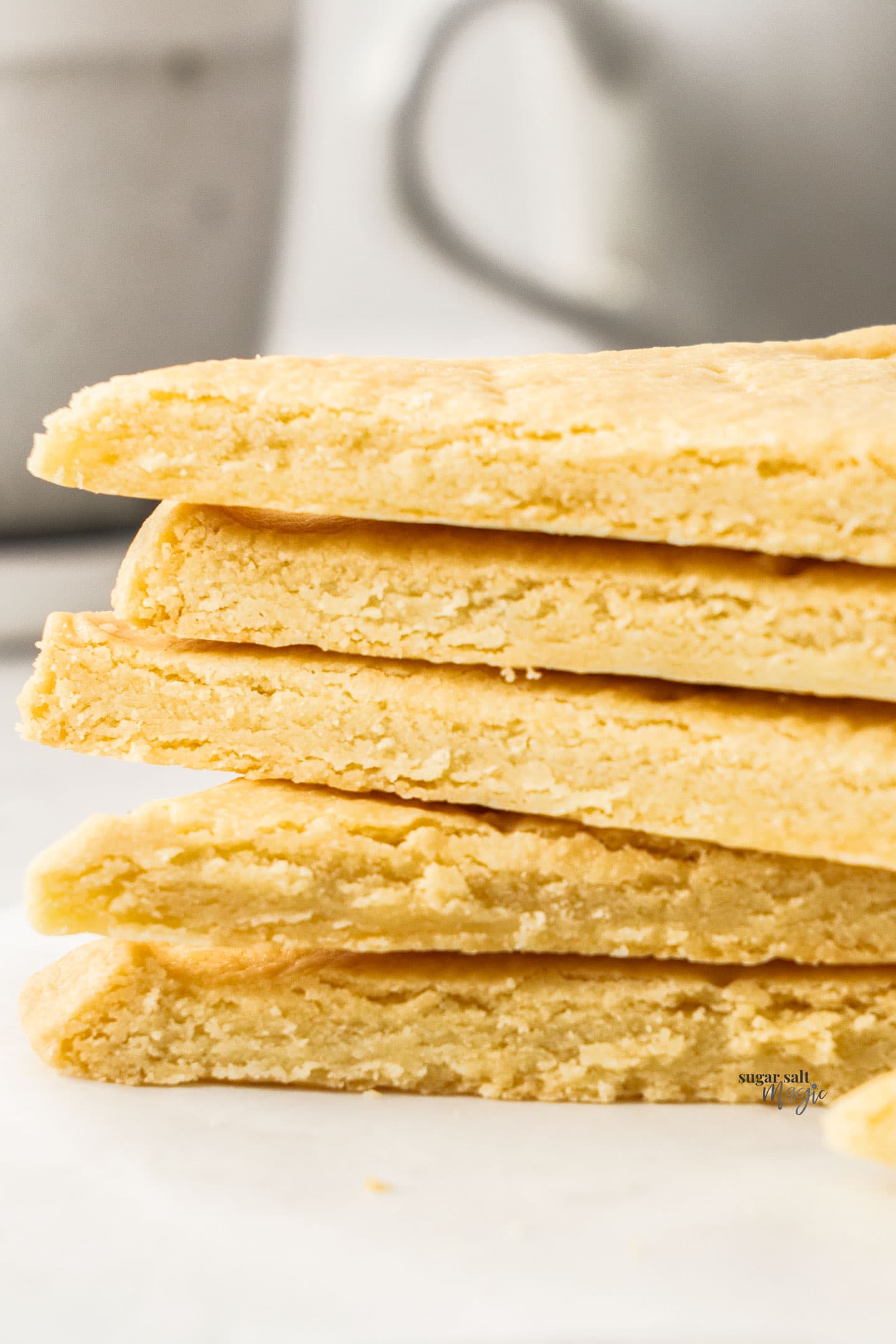
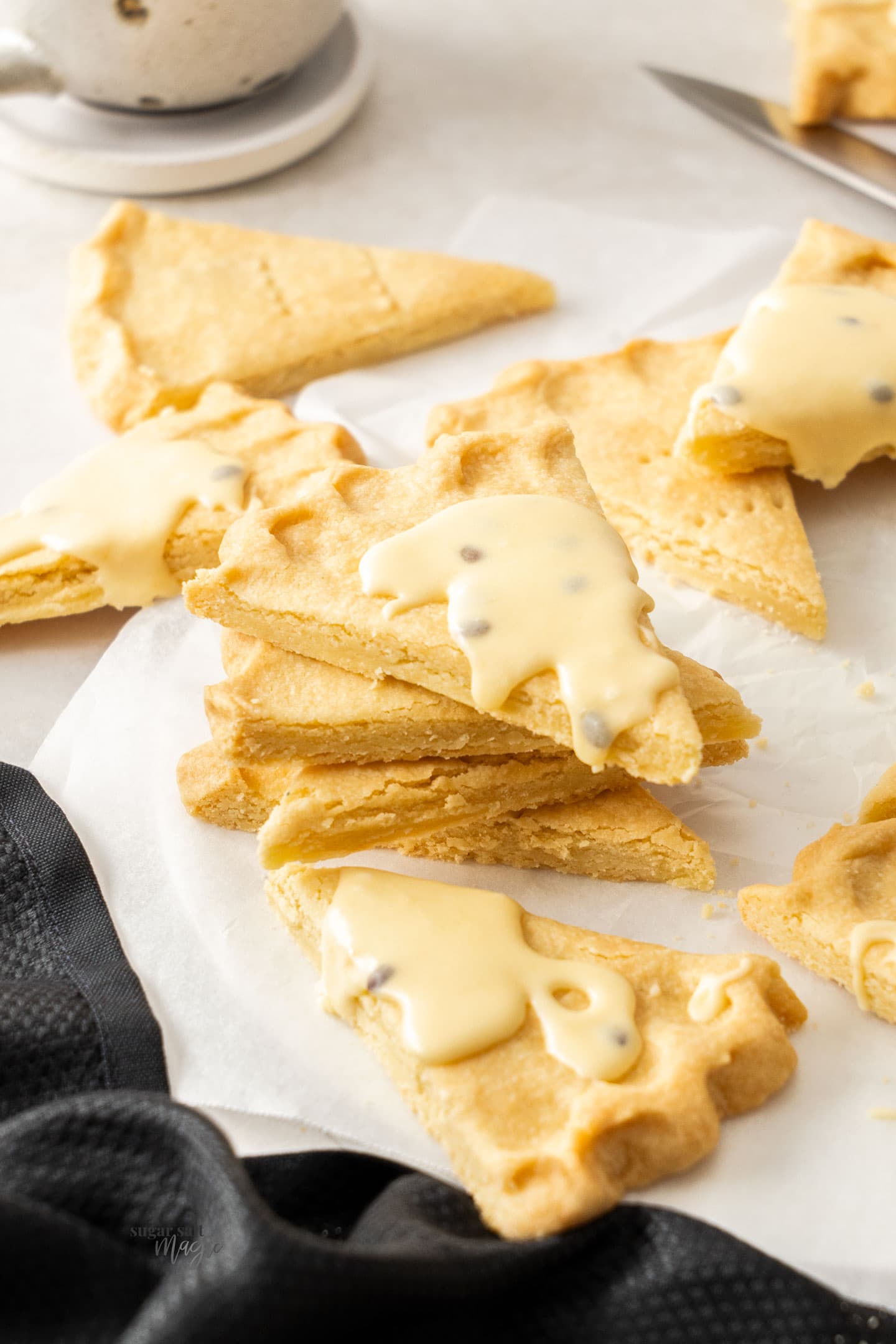
Variations
This butter shortbread is perfect for adding other flavours and add-ins to the dough. Try some spices like my spiced shortbread cookies; you could even use pumpkin spice. Add the zest of a lemon or orange for a little zing. Add chocolate chips or nuts (or a combination of both). Try dried fruit or freeze dried fruit. You can even add some cocoa for a chocolate shortbread.
Shortbread is lovely dunked in or drizzled with chocolate too. Any will work; dark, milk or white chocolate.
Storage
Now that you have a batch of melt in the mouth shortbread, what to do with it all? These buttery shortbread cookies make for wonderful food gifts and they keep really well too.
- You can make the dough ahead, up to one week. Keep it stored in the refrigerator wrapped well in plastic wrap.
- Baked shortbread cookies will keep well in an airtight container at room temperature for 7-10 days.
- Both the dough and the baked cookies can be frozen. Wrap the dough in plastic wrap and store in the freezer for up to 3 months. The cookies can be stored in an airtight container, then freeze for up to 3 months.
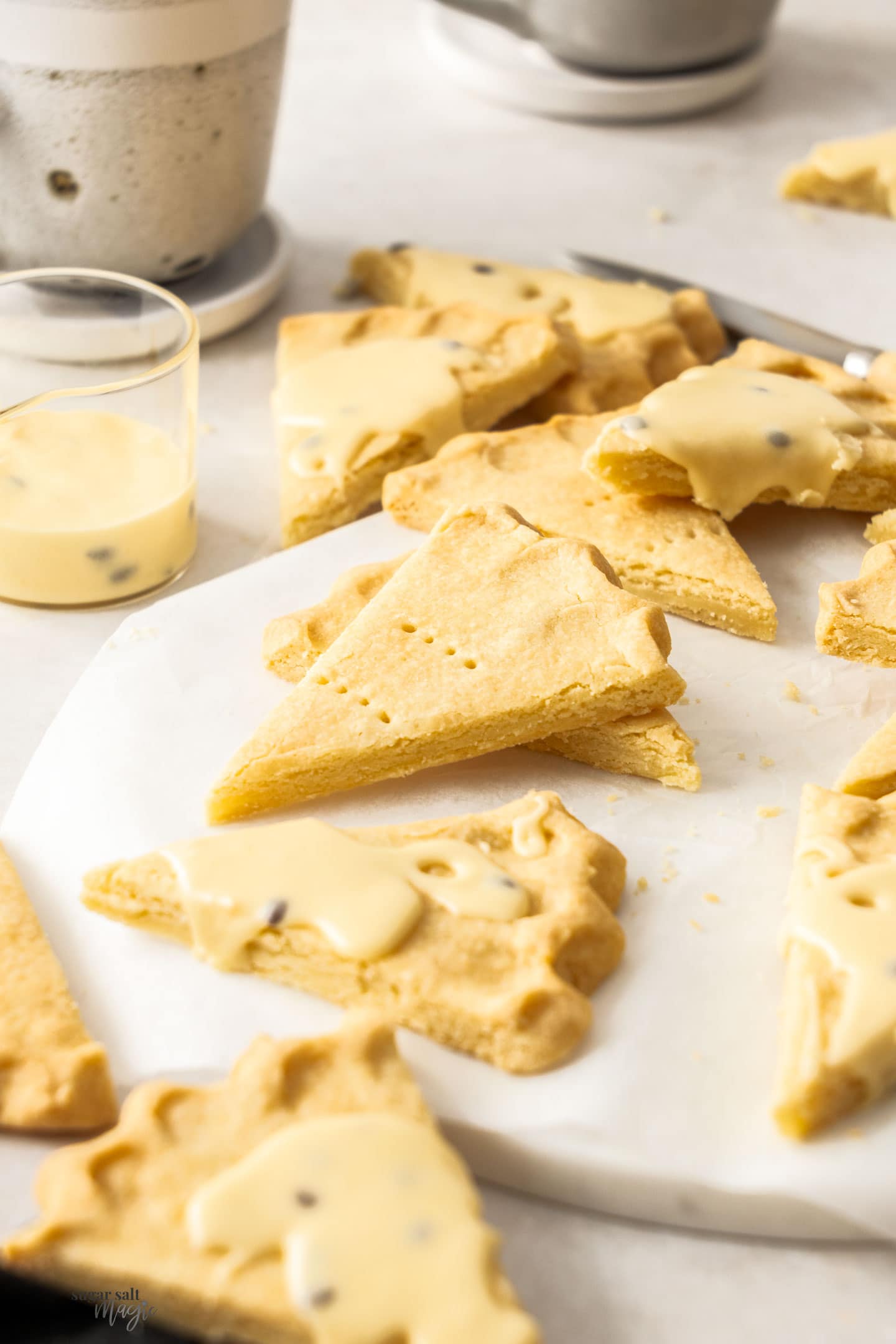
Did you try this traditional shortbread recipe?
Leaving a rating and comment below the recipe is so helpful!
Hungry for more? Subscribe to the newsletter for free recipes straight to your inbox. Also, follow along on Facebook, Pinterest and Instagram.
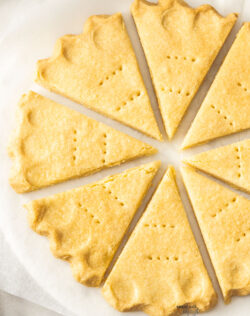
Ingredients
FOR THE ALL BUTTER SHORTBREAD
- 226 g unsalted butter, softened (1 cup / 2 sticks)
- 105 g caster sugar (superfine sugar) (½ cup / 3 ½ oz)
- 2 teaspoons vanilla extract
- 260 g plain flour (all purpose flour) (2 cups / 9.2oz)
- 70 g cornflour (US cornstarch) (½ cup / 2 ½oz)
FOR THE PASSIONFRUIT ICING
- 1 ½ tablespoons unsalted butter, melted (21g / ¾oz) (notes 1)
- 1 ½ – 2 tablespoons passionfruit pulp (notes 1)
- 1 cup icing sugar (powdered sugar) (130g / 4.6oz)
For best results, always weigh ingredients where a weight is provided
Equipment
- A silicone spatula so nothing gets left behind.
- A simple hand beater or stand mixer
- Sheets of baking paper
Instructions
- FOR THE ALL BUTTER SHORTBREAD:Preheat the oven to 160C (140C fan forced) / 350F.
- In a stand mixer with paddle attachment, beat together the butter and sugar until pale and creamy.
- Sift in the flour and cornflour gently mixing until just incorporated.
- Add the vanilla and gently mix again.
- Divide dough into 2 portions.
- Roll out the first portion between 2 sheets of baking paper to a 20cm/8 inch disc. You can use the base of an 8 inch spring form pan to check your progress.
- Scallop / crimp the edge of the dough circle using your fingertips (two on the outside, one on top of the dough and gently press towards each other). Now use a sharp knife to cut the dough into 8 wedges, without moving them, then prick the top of each wedge twice with a fork (this helps steam escape without making the dough puff).
- Carefully transfer to a baking sheet, then repeat with the second ball of dough.
- Bake for 25-30 minutes until they are lightly golden. Remove from the oven and carefully use a knife to re-form those slices / wedges – don’t separate them.
- Leave to cool on the tray until firm, then transfer to a wire rack. Make sure they are totally cool before you ice them.
- FOR THE PASSIONFRUIT ICING:Mix together the icing sugar, butter and 1 ½tablespoons of the passionfruit puree. Gradually mix in a little passionfruit at a time until you have a consistency that settles into itself in about 10 seconds.
- Separate the shortbread wedges on the wire rack then sit the rack over a baking tray lined with baking paper. Spoon the icing over the cooled cookies, allow them to set for a few minutes, then serve or store in an airtight container at room temperature.
- Please take a moment to leave a comment & rating. It's appreciated and so helpful.
Notes
- Tablespoons: I use a standard Australian 20ml tablespoon (equal to 4 teaspoons). Check yours before measuring.
- For best results, you should always weigh ingredients like flour and sugar. Kitchen scales are relatively cheap but if you can’t weigh the ingredients, use the spoon and level method (don’t scoop).
- All ovens vary. Check for doneness 3-4 minutes before the recipe suggests
- Nutrition details are approximate only – scroll below the recipe to find the full nutritional information.
- The passionfruit icing is optional and not part of a traditional recipe, just a great combo. If you want to leave it off, sprinkle the dough rounds with a tablespoon of caster sugar before baking. They aren’t super sweet on their own and a traditional recipe always has a sprinkle of sugar on top.
This post may contain affiliate links that earn me a small commission for my referral, at no extra cost to you. Thank you for supporting Sugar Salt Magic.

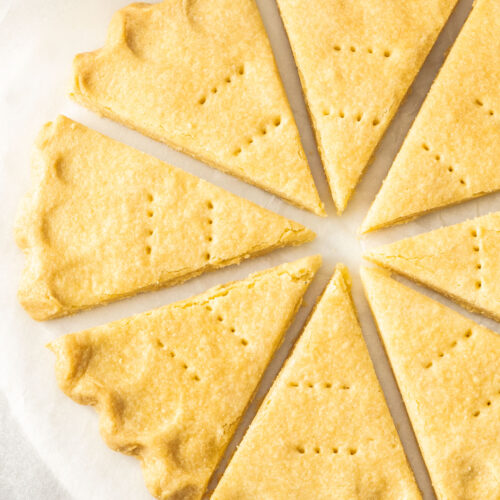
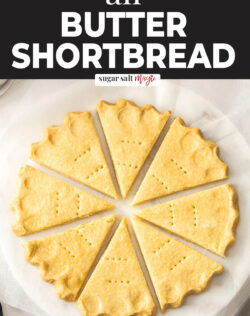

4 Comments on “All Butter Shortbread (with Passionfruit Icing)”
This recipe is delicious, I made lemon icing just because it was I have, and combine perfectly too! Thanks a lot
Yes, lemon icing would be lovely. So happy you love this recipe
Love the passion fruit icing! I haven’t made anything with fresh passion fruit before, I want to try this 🙂
Thanks so much Trang. A little passionfruit goes a long way